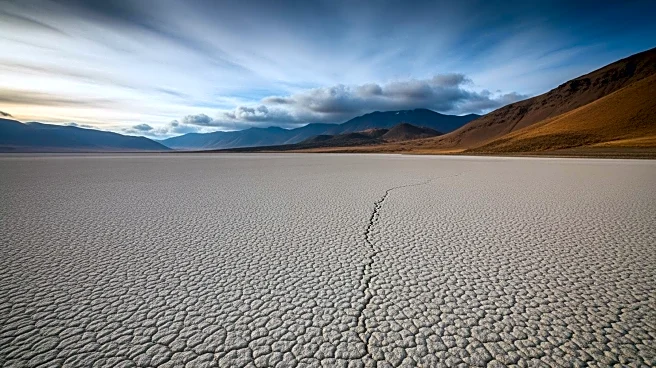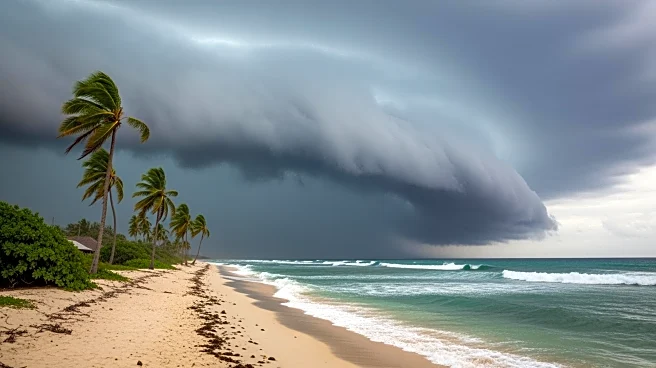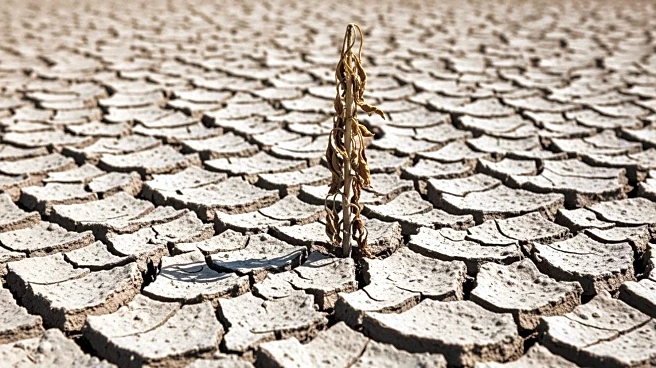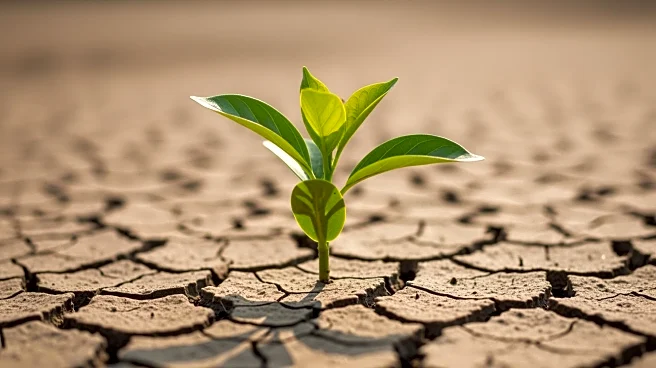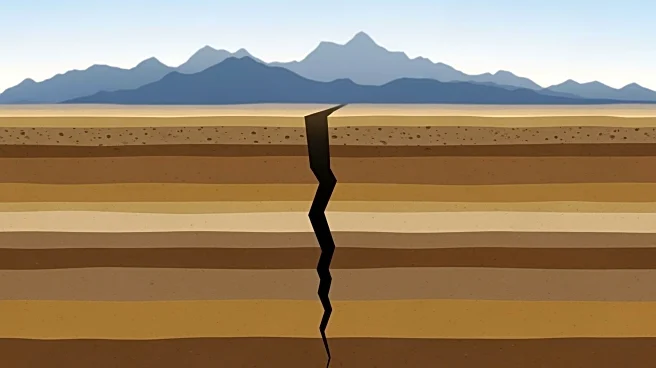What's Happening?
Recent research has highlighted the seismic risks associated with drying rift lakes, particularly focusing on Lake Turkana in Kenya. As the climate in East Africa became drier over millennia, Lake Turkana's
water levels dropped significantly, leading to increased seismic activity. This phenomenon is attributed to reduced pressure on the lakebed, which facilitates fault slippage and volcanic activity. The study, conducted by Christopher Scholz and colleagues, involved analyzing sediment layers and sonar imaging to understand the geological changes. The findings suggest that similar seismic risks could affect other bodies of water globally as climate patterns shift.
Why It's Important?
The study underscores the broader implications of climate change on geological stability, particularly in regions with significant water bodies. As climate change alters rainfall and drought patterns, the potential for increased seismic activity poses risks to infrastructure and human safety. This research calls for integrating seismic hazard assessments into climate change adaptation strategies, especially in areas prone to drying lakes. Governments and planners are urged to consider these risks when developing or modifying water management systems, such as dams, to mitigate potential earthquake impacts.
What's Next?
The study suggests that seismic hazard assessments should incorporate climate change projections to better predict future risks. This could lead to more informed decision-making regarding infrastructure development and disaster preparedness. Additionally, the research advocates for the installation of seismometers in regions undergoing significant hydrological changes to monitor seismic activity and inform mitigation strategies.
Beyond the Headlines
The findings highlight the interconnectedness of climate change and geological processes, emphasizing the need for interdisciplinary approaches to address emerging environmental challenges. This research could prompt further studies into the impact of climate change on other geological phenomena, potentially influencing global policy on climate adaptation and disaster risk reduction.
